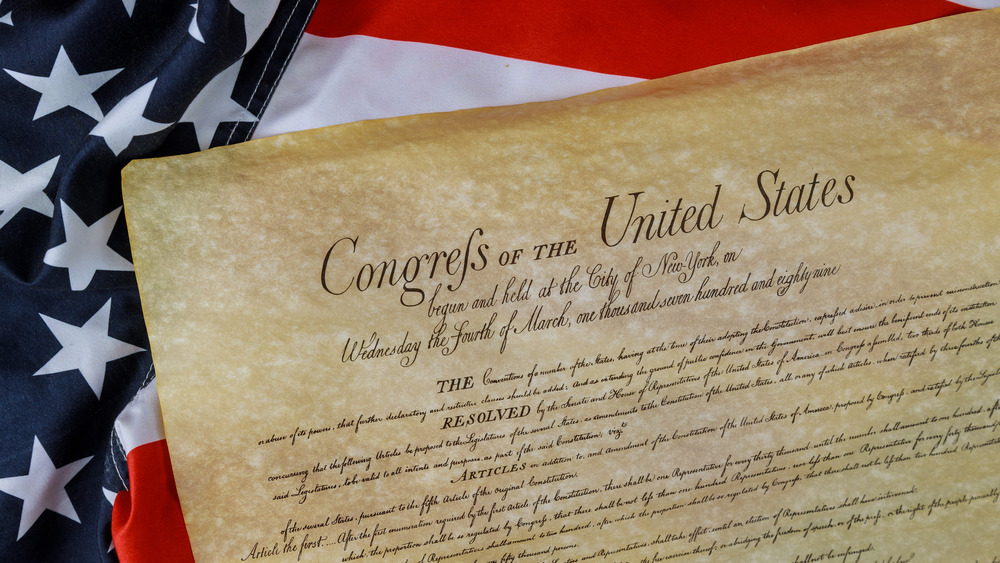How Does The 25th Amendment Work?
Even before President-elect Joe Biden was duly elected next president of the United States by a final count of 306 electoral votes to 232, President Donald Trump was making baseless claims about the results of the 2020 election. Back in November, Republican officials urged him to accept the election's results, per The Guardian, but instead, Trump doubled down. In short, the former Celebrity Apprentice star refuses to accept the decision that he so gleefully doled out to others season after season: "You're Fired."
The ultimate problem is not an actual, legal refutation of the election results, which is unlikely. It's also unlikely, as Legal Eagle explains, that Trump will be dragged out of the White House by his lapels. The problem is the president churning the ire of his base and calling them to implicit or direct violent action, all the while demanding "law and order" (per NPR) and refusing to accept a peaceful transition of power.
So what if Trump really is "unable" or "unfit" to serve office? Time to turn to the 25th Amendment.
The 25th Amendment is designed for a president unfit for duty
We say "unable" or "unfit" to serve office because those are the cases that the 25th Amendment was designed to cover. The amendment isn't a way to storm Capitol Hill and forcibly extricate a sitting president out of office, physically or legally. It also isn't a framework to resolve conflicts in contested election results, nor was it designed to address issues regarding the unwilling transference of power because not a single president has actually refused to step down. All of those issues are covered by other legislations and law enforcement methods (like the Secret Service taking orders from Biden upon Inauguration Day and subject to commands such as, "get that guy out of my chair").
The 25th Amendment, as Cornell Law School outlines, was ratified in 1967 largely as a consequence of the assassination of John F. Kennedy in 1963. The heart of the amendment sought to resolve an issue that had come up time and again over the course of U.S. history, such as Woodrow Wilson being "an invalid for the last eighteen months of his term." Namely, what do we do if the president can't fulfill his job duties?
The solution is fairly well-known at this point: If the president dies, then the vice president takes up the presidential mantle, and if the vice president dies (which has actually happened seven times so far), then the president nominates a new one. The rest of the amendment covers how this happens, in detail.
Section 4 of the 25th Amendment allows for the president to be removed from office
So how does the 25th Amendment potentially impact the legal, democratic transference of power from president to president-elect? As Business Insider tells us, it revolves around Section 4 of the amendment, which reads, "Whenever the Vice President and a majority of either the principal officers of the executive departments or of such other body as Congress may by law provide, transmit to the President pro tempore of the Senate and the Speaker of the House of Representatives their written declaration that the President is unable to discharge the powers and duties of his office, the Vice President shall immediately assume the powers and duties of the office as Acting President."
Basically, this means that if the vice president and 11 (out of 23) of cabinet members declare that the president is unfit for office, then he can be deposed. John D. Feerick, former dean of Fordham Law School, who helped develop the amendment to begin with, cautions that it only covers "reliable facts regarding the president's physical or mental faculties," not simple rabbling rousing or otherwise contentious behavior.
At that point, the decision moves to Congress, where two-thirds of both houses have to agree within 21 days. Otherwise, the attempt falls through.


